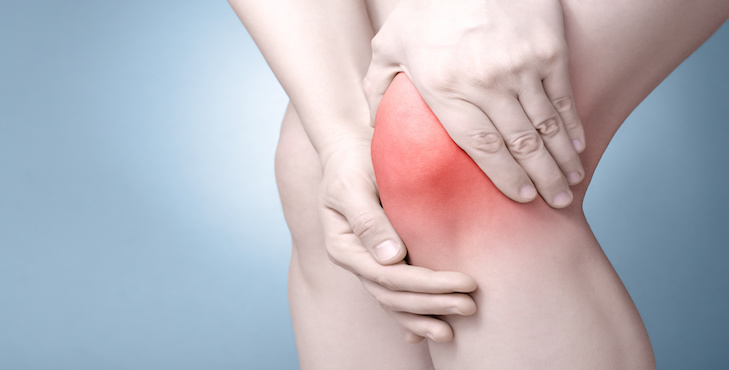What does Painful Joints refers to? Painful joints refer to the discomfort, soreness or stiffness felt in one or more joints in the body. Joint pain can be caused by many factors, including injury, disease or normal wear and tear associated with ageing. It can affect any joint in the body, from the small joints in the fingers to the large joints in the hips and knees. Joint pain can be acute or chronic and it can range from mild to severe. It is a common problem that affects millions of people worldwide.
What is Bursitis?
Bursitis is a condition in which the bursae, small fluid-filled sacs that cushion the bones, tendons and muscles near the joints, become inflamed. Bursae are found in many areas of the body where friction occurs between bones, tendons and muscles, such as the shoulder, elbow, hip and knee. Bursitis can be caused by overuse or injury to the joint, infection or a preexisting condition such as rheumatoid arthritis. Symptoms of bursitis include pain, swelling and stiffness in the affected joint, which may make it difficult to move the joint. Treatment may include rest, ice, compression and elevation of the affected joint, as well as anti-inflammatory medication and physical therapy. In some cases, corticosteroid injections or surgery may be necessary.
Causes Of Painful Joints Bursitis
- Repetitive motion: Repeated motions or activities that put pressure on a particular joint or bursa can cause bursitis. This is common in athletes or people who perform manual labour.
- Injury: Direct trauma or injury to a joint can cause bursitis. I.e.. falling on your knee can cause bursitis in the knee joint.
- Medical conditions: Certain medical conditions such as gout, rheumatoid arthritis or lupus can cause bursitis.
- Infection: Sometimes, the bursae can become infected, leading to bursitis. This is more common in people with weakened immune systems.
- Aging: As we age, our joints and tendons become less flexible, more prone to inflammation and injury, increasing the risk of bursitis.
Symptoms Of Painful Joints Bursitis
The symptoms of bursitis in painful joints can vary depending on the affected joint. If left untreated, bursitis can lead to chronic pain, stiffness in the joint and may even result in a loss of mobility. It is important to seek medical attention if you are experiencing any of these symptoms.
- Pain: Pain in the joint is the most common symptom of bursitis. The pain is usually described as a dull ache or a burning sensation that worsens with movement or pressure on the affected joint.
- Swelling: Swelling around the joint is another common symptom of bursitis. The area may feel tender or warm to the touch and the skin over the joint may appear red or bruised.
- Stiffness: The joint may feel stiff or difficult to move, especially after a period of rest or inactivity.
- Limited range of motion: Bursitis can also cause a limited range of motion in the affected joint, making it difficult to perform everyday tasks or activities.
- Clicking or popping sound: Some people with bursitis may also hear a clicking or popping sound when moving the affected joint.
Things To Consider About Painful Joints Bursitis
If you suspect you have bursitis, it’s important to seek medical advice. A doctor can diagnose bursitis by examining the affected joint and performing tests such as X-rays, MRI or ultrasound to rule out other conditions such as a fracture or arthritis.
In most cases, bursitis can be treated with rest, ice and pain relief medication. Physical therapy may also be recommended to improve joint strength and flexibility. In some cases, a doctor may suggest aspiration of the bursa, which involves draining the fluid using a needle.
Preventing bursitis involves taking precautions when performing repetitive activities or putting pressure on joints. Wearing protective gear and taking breaks during activity can also help to prevent bursitis. Maintaining a healthy weight and eating a balanced diet can also help to reduce the risk of bursitis and other joint-related conditions.
Painful Joints Medication
| Nonsteroidal anti-inflammatory drugs (NSAIDs) | These drugs, such as ibuprofen and naproxen, can help reduce pain and inflammation. |
| Corticosteroids | These drugs can be injected directly into the affected joint to reduce inflammation and pain. |
| Analgesics | Over-the-counter pain relievers such as acetaminophen can help relieve pain. |
| Topical creams | Some creams containing capsaicin or lidocaine can provide temporary relief of pain. |
Conclusion
Painful joints can be caused by various factors such as bursitis, arthritis and other conditions. If you experience persistent joint pain, it is important to seek medical advice to determine the underlying cause and get appropriate treatment. Treatment options include medication, physical therapy and lifestyle changes. It is also important to maintain a healthy diet and exercise regularly to keep your joints healthy. By taking the necessary steps to manage, prevent joint pain, you can improve your overall quality of life and enjoy an active lifestyle.
